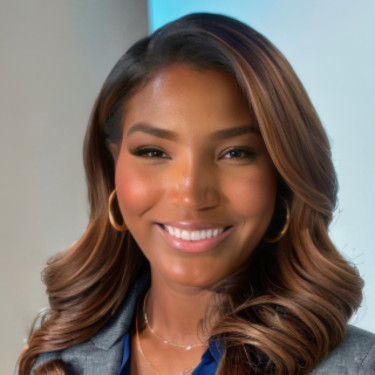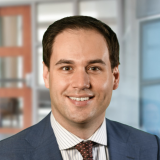As a pediatrician, my greatest goal is to see children happy, healthy, and safe in school – and my profession is a critical part of helping children achieve this. Beyond providing preventative well-child care and treating their illnesses, we pediatricians also advocate for children’s physical and mental health. Yet every back-to-school season, that goal is overshadowed by an all-too-familiar reality – gun violence.
Most recently, when news of the latest school shooting in Georgia broke, I was overwhelmed by a feeling I couldn’t initially pinpoint. What felt like unease quickly gave way to a deeper realization: I was mourning.
Gun violence is now the leading cause of death among American children and teens, surpassing car accidents, cancer, and other injuries combined.
Schools are places of learning and growth but have also become grounds for lockdown drills and evacuation plans. As a pediatrician, I can’t help but feel a weight of guilt for sending healthy children back into an increasingly dangerous environment each September.
Health care workers play a pivotal role in the prevention of gun violence, particularly by addressing mental health and identifying warning signs of violence or emotional distress before tragedy strikes. I think back to a patient from two years ago—a 14-year-old boy who arrived at the ED with his parents. The tension in the air was palpable. His mother’s hands shook as she handed me crumpled papers of her son’s, filled with violent drawings and plans for an attack on his school. His parents looked terrified, torn between the fear of what their son might do and the despair of not knowing how to help him.
“We’re here because he says he is going to hurt his teachers and classmates,” his mother said, her voice tight.
His parents, exhausted and fearful, had tried everything: counseling, medications, school interventions, and gun safes. Their son had threatened to shoot his teachers and classmates, and this emergency visit felt like their last hope. As I stood in the middle of a busy pediatric ED, I could feel I was at a crossroads between life and death. Working in health care, you see sickness and health, but what do you do when you’re the last line of defense in trying to prevent something unspeakable?
After a thorough medical and psychiatric evaluation, he was admitted for inpatient psychiatric care. During his stay, a multidisciplinary team, including pediatricians, psychiatrists, social workers, counselors, and even leaders from his school, worked together to support him. This collaboration underscores the need to bridge the gap between medical care and educational systems, ensuring children have a safety net in place – long before a crisis occurs.
I still remember the tension – the chill that flooded my body and rippled through my wrinkled hospital scrubs – and the unspoken question in that emergency room: What if they hadn’t brought him in? What if he had followed through on his threats? As I stood there, grappling with the weight of those questions, I was struck by a sad reality.
Our children deserve better.
They deserve schools where they can focus on learning, not surviving. They deserve systems that value their safety and support their mental health. I know I speak for all health care professionals when I say we want to see kids who are healthy, happy, and, most importantly, alive. Our interventions should not start in the aftermath of a tragedy. They need to begin in policy chambers and clinics, in Congress and hospitals, with politicians, and with physicians.
As physicians, we have a crucial role in protecting student safety, and we need to focus on what we have the power to affect. Here’s what we can do in our roles to combat gun violence in school:
1) Expand Early Mental Health Screenings: We should integrate standardized mental health screening tools into routine pediatric visits at an earlier age. Early identification of behavioral issues can prevent escalation. Expanding mental health services, including counseling and crisis intervention, can help identify at-risk youth before violence occurs.
2) Collaborate Across Specialties: Pediatricians should work closely with school counselors, social workers, and mental health professionals to create a robust care network. By forming a multidisciplinary team, we can catch warning signs earlier and provide comprehensive, wrap-around care for children who are at risk.
3) Improve Intake Procedures: Encourage hospitals and clinics to include specific questions about emotional distress, exposure to violence, and access to firearms as part of the intake process for children and adolescents. Early identification of these factors on screeners can help clinicians intervene sooner by identifying risk factors associated with youth violence.
4) Integrate Gun Safety into Pediatric Visits: Discussions about gun safety should become a routine part of pediatric care, just as we talk about car seats and helmet use. As trusted professionals, we can guide families on the importance of safe firearm storage to keep their children safe.
5) Advocate for Policy Change: As physicians, we need to push for legislation like universal background checks, safe gun storage laws, investments in community-based violence prevention programs, and bans on assault weapons and high-capacity magazines. These weapons are designed for war, not schools. Taking policy steps toward remedying gun violence can reduce the lethality of shootings.
As physicians, we have an important role to play in children’s care and safety. By taking proactive steps, we can create a system that protects our kids – not just from illness but from the epidemic of gun violence that continues to claim their lives.
What are your thoughts on physicians' roles in affecting health policy? Share in the comments!
Dr. Tasia Isbell is a Harvard-trained general pediatrician in Phoenix, AZ. She enjoys cycling, traveling, and using writing as a tool to advocate for children's health equity. She tweets at @DrTasiaIsbell. Dr. Isbell is a 2024–2025 Doximity Op-Med Fellow.
Illustration by April Brust







